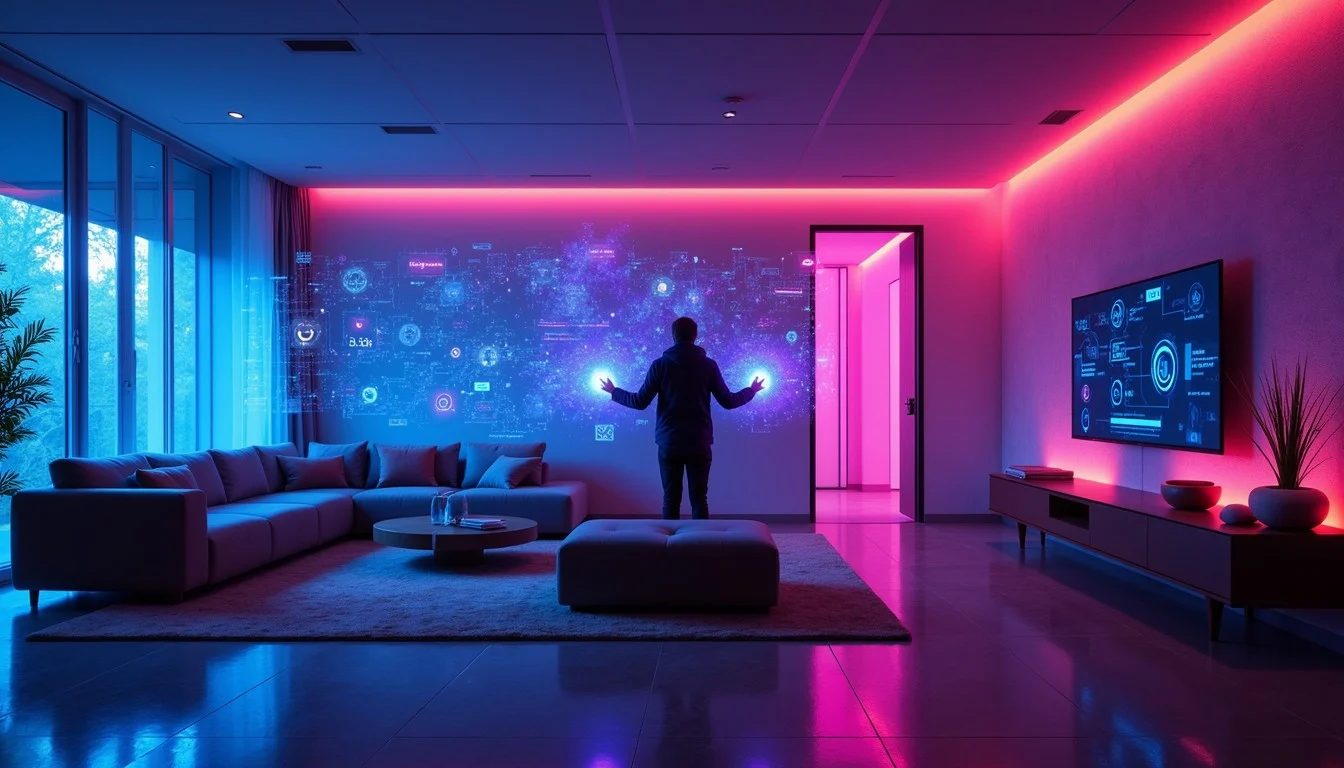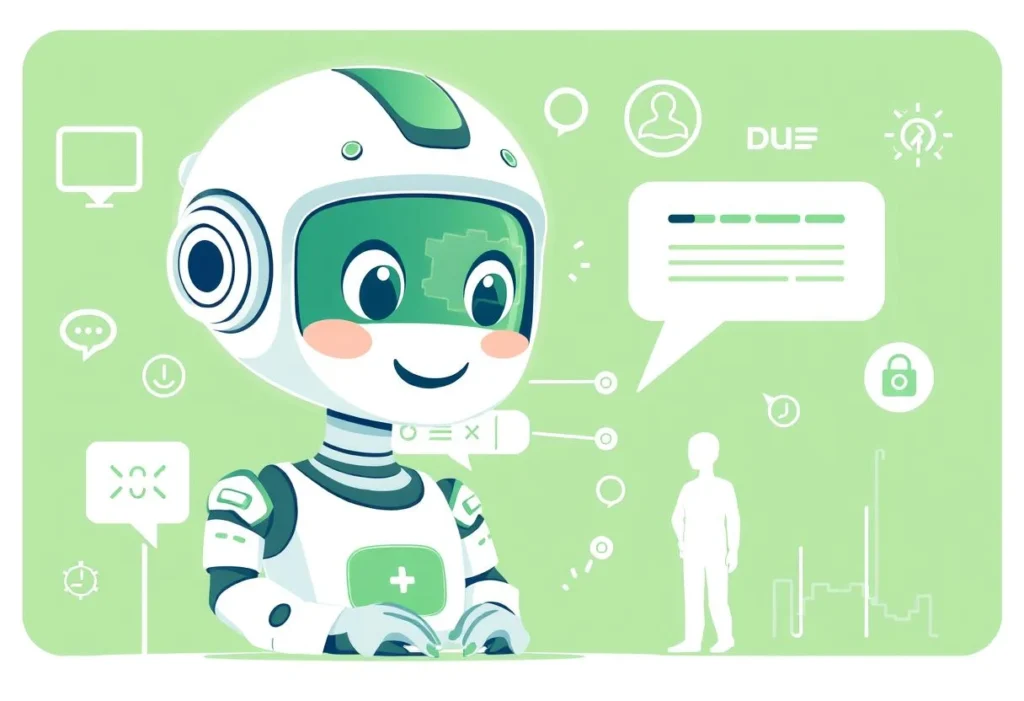Imagine waking up to the gentle glow of lights set to your perfect brightness, a warm cup of coffee waiting in the kitchen, and your favorite playlist softly filling the room—all before you’ve even left bed. This isn’t a futuristic dream; it’s the reality that smart home technology brings to life. Across TIER-1 countries, smart homes are transforming the way we live, making every aspect of daily life more comfortable, efficient, and secure.
In this article, we’ll explore how smart homes are revolutionizing modern living, what technologies drive this change, and why these advancements are more than just a trend—they’re the foundation of homes of the future.
What Are Smart Homes?
A smart home is a residence equipped with devices and systems that automate and control various functions, such as lighting, security, climate, and entertainment, often remotely via a smartphone or voice commands. Thanks to the Internet of Things (IoT), these devices communicate seamlessly, making everyday tasks simpler and smarter. Today’s smart home ecosystem includes smart thermostats, connected appliances, voice assistants, intelligent security systems, and even robot vacuums.
The Rise of Smart Home Technology
Growing Popularity and Adoption
Smart home adoption has skyrocketed in recent years. According to industry reports, millions of households in North America, Western Europe, and Asia-Pacific now enjoy at least one form of smart home automation. As consumers seek more convenience and control, these solutions have become increasingly accessible and affordable.
Technological Advancements Fueling Growth
The evolution of Wi-Fi networks, the expansion of affordable devices, and integration with voice-assistant platforms—like Amazon Alexa, Google Assistant, and Apple HomeKit—have made smart homes easier to set up and use than ever before. The rise of artificial intelligence and machine learning also allows these systems to learn your habits and anticipate your needs, creating truly personalized living experiences.
Major Benefits of Smart Homes
Enhanced Convenience and Comfort
Smart homes simplify daily routines. Imagine controlling your thermostat, adjusting the lights, and managing appliances—all with a simple tap or voice command. Automation provides tailored experiences, such as setting the mood for movie night, scheduling coffee to brew, or locking doors automatically when you leave.
Superior Security and Peace of Mind
One of the biggest drawing cards for smart homes is improved security. Features like smart locks, surveillance cameras, doorbell cameras, and motion sensors provide real-time alerts and remote access. Many systems offer two-way audio, night vision, and automatic emergency notifications—helping homeowners feel safe whether they’re home or away.
Energy Efficiency and Sustainability
Smart thermostats, sensors, and automated lighting systems contribute significantly to energy savings. By adapting to your schedule and learning your preferences, these devices reduce waste—lowering utility bills and minimizing environmental impact. For example, smart thermostats can detect when you’re out and automatically adjust the temperature to save energy.
Accessibility and Independent Living
Smart homes provide vital support for the elderly and those with disabilities. Voice controls, automated alerts, and remote monitoring empower individuals to live independently longer. Family members can also monitor loved ones’ safety and health remotely—providing reassurance without invading privacy.
Cost Savings Over Time
Although the initial investment in smart home technology can vary, the long-term savings on energy, insurance, and even maintenance add up. Insurance companies in some regions now offer discounts for homes equipped with monitored security systems or leak detection devices, further enhancing value.
Key Components of Modern Smart Homes
Smart Lighting
Smart bulbs and switches let you adjust brightness, color, and even set schedules to fit your lifestyle. You can dim the lights for movie night or wake up to a gentle sunrise simulation—automatically.
Connected Thermostats
Devices like the Nest Thermostat and Ecobee optimize your home’s heating and cooling. These systems learn your routines, adjust for weather, and can be controlled from anywhere, maximizing comfort and savings.
Advanced Security Systems
From video doorbells to full-home surveillance, smart security keeps you connected. You’ll get alerts if someone approaches your doorstep, and you can even speak to visitors through your phone.
Automated Appliances
Today’s ovens, refrigerators, washing machines, and robotic vacuums connect to your network. Manage them remotely, schedule tasks, receive maintenance reminders, and even reorder supplies automatically.
Voice Assistants and Hubs
Amazon Alexa, Google Home, and Apple HomePod act as the “brain” of the smart home, letting you control connected devices with simple voice commands. These hubs integrate various gadgets into a unified, intelligent ecosystem.
Overcoming Common Smart Home Challenges
Privacy and Security Concerns
With great convenience comes the need for strong digital security. Homeowners should secure their Wi-Fi networks, update device firmware, and use strong passwords. Many manufacturers are continuously improving encryption and security protocols to keep private data safe.
Compatibility and Integration
Not all devices work seamlessly together. Before investing, it’s wise to choose devices that support common standards or opt for a hub that integrates multiple brands. This ensures a smooth and frustration-free experience.
Initial Investment
While smart home devices have become more affordable, a fully automated home still requires an upfront investment. However, starting small and expanding over time helps spread out costs and allows you to focus on what matters most to your lifestyle.
How Smart Homes Enhance Daily Life
Streamlining Everyday Tasks
Daily routines become effortless with smart automation. Set timers for lights, schedule appliances to run at off-peak hours, or get reminders when it’s time to leave for work. These small touches free up time and reduce mental load.
Creating Personalized Experiences
Imagine returning home after a long day and having the temperature just right, your favorite playlist softly playing, and lights set for relaxation—all before you step through the door. Smart homes tailor experiences to your preferences, making your environment truly your own.
Enabling Remote Control and Monitoring
Whether you’re at work or on vacation, remote access means you always stay in control. Forgot to turn off the lights? Need to check in on your pets? Want to let a friend in? All it takes is a tap on your smartphone.
The Future of Smart Homes
Looking ahead, smart homes are becoming even more advanced. Artificial intelligence will further personalize experiences, and new sensors will monitor everything from air quality to wellness. Integration with renewable energy sources and electric vehicles will make homes more sustainable and self-sufficient.
As technology evolves, the possibilities are nearly limitless. In TIER-1 countries, smart homes are quickly becoming the new standard—reshaping real estate, improving lifestyles, and setting the stage for smarter cities and communities.
Conclusion
Smart homes are not just about technology—they’re about making daily life richer, safer, and more comfortable. They allow us to spend less time on chores and more time enjoying what truly matters. As adoption continues to rise and technology becomes more advanced, smart homes will be at the center of modern living, revolutionizing life as we know it.
If you’re ready to embrace convenience, security, energy efficiency, and a better quality of life, now is the perfect time to explore smart home technology. Step into the future—your home is smarter than you think!
Ready to make your home smarter? Upgrade today and experience the revolution—because the future of modern living starts at home.






